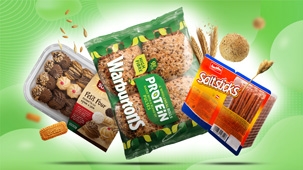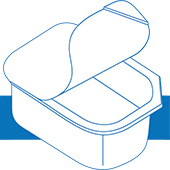Packaging of confectionery and non-dairy bakery products:
the main process of spoilage for confectionery and non-dairy bakery products is mold growth, stale and loss of moisture. Yeasts may cause problems with some frozen products. Also, due to the fact that in non-dairy bakery products, the growth of bacteria is inhibited, usually less than one percent can cause problems.
However, other species such as Staphylococcus aureus and Bacillus grow in these products and can pose a risk if there is problem creates potential food poisoning. As a result, health care needs to be taken into account.
Using the modified atmosphere method (MAP) can increase the shelf life of products such as sweets and breads that do not have a dairy base. Because molds are aerobic microorganisms, they can be inhibited by a mixture of N2 and CO2 gases. The gas to product ratio is often 2 to 1. With the use of barrier film and container, can be prevented the moisture transfer from the package.
The modified atmosphere method (MAP) has a significant effect on maintaining health and preventing product failure.
It is necessary to mention that the rate of spoilage (stale bread) increases at cold temperatures, so most products, such as sweets and bread, require less cold and are usually stored at room temperature.
In the case of hot bakery products, the process of staling the product is done by the degradation of starch, while the heating cycle can reverse this trend.
Comments
Post comment
Comments sent by you will be published after the approval of the website administrator.


